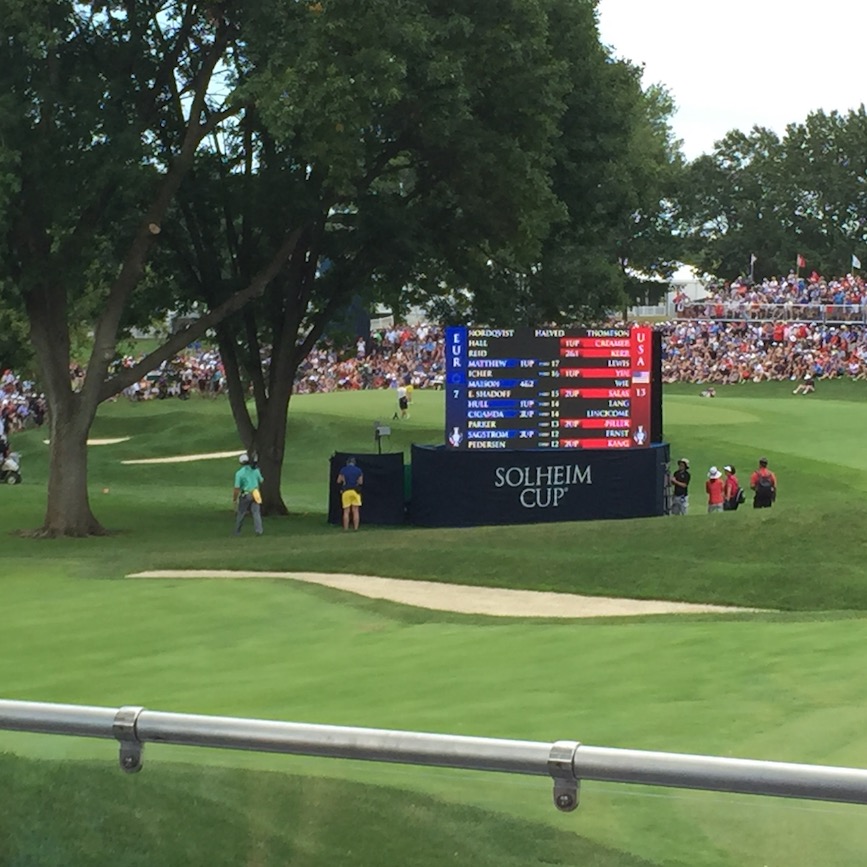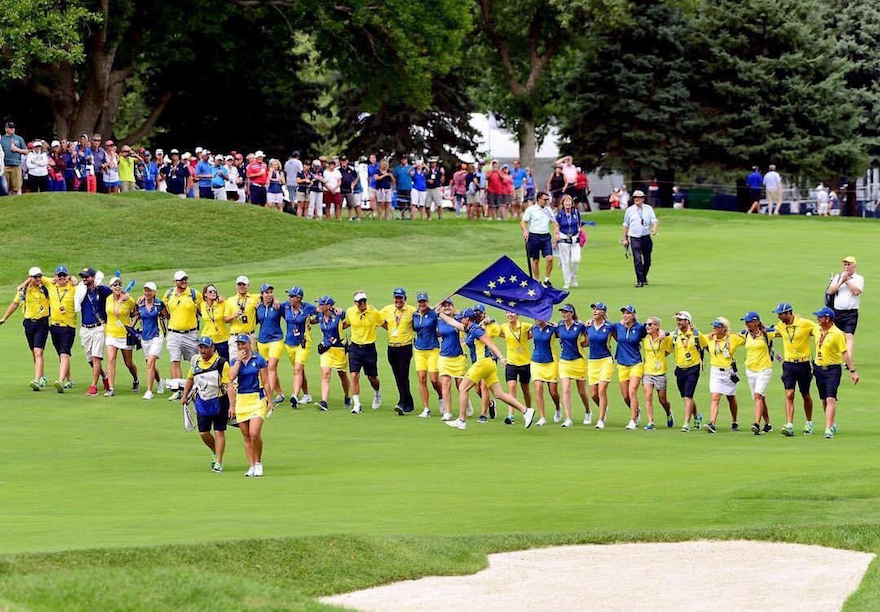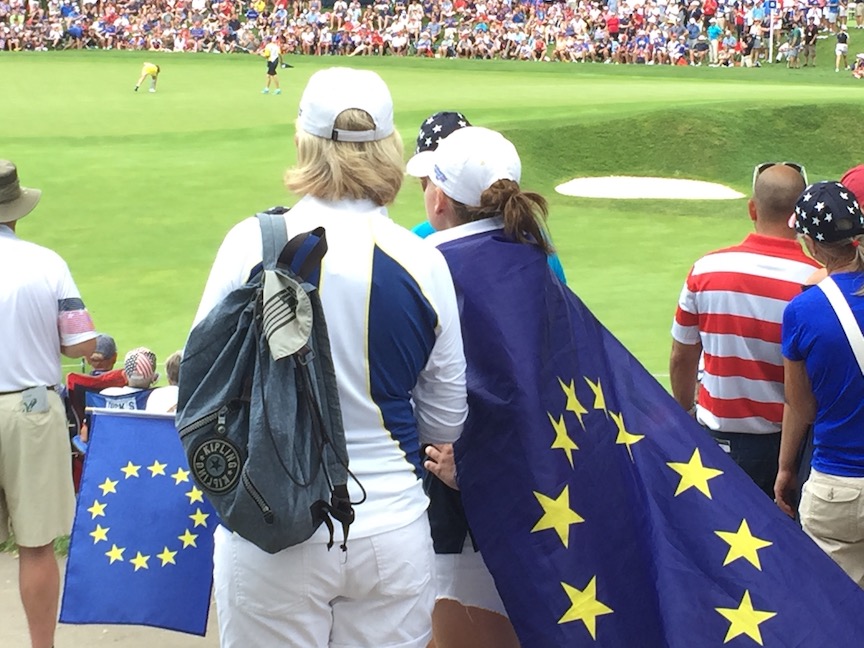Why positive media exposure is essential for women’s golf
In the third of a three-part series exploring what the golf industry can do to increase the number of women playing the game, Kari Haug discusses the impact positive media exposure for women’s golf can have on the recruitment and retention of women golfers
What is limiting the growth of women’s golf? Parts one and two of this series addressed potential solutions to reducing the attrition of women golfers through: improved course design for women, improved research on women’s golf, increased presence of female role models in the golf industry, and improved choice and access to quality golf equipment for women. Part three is the final installment of this series and will discuss the impact positive media exposure for women’s golf can have on recruitment and retention of women golfers.

Compared to media coverage of men’s sports, only four per cent of all coverage is devoted to women sports, including golf. This is according to research carried out by the University of Minnesota’s Tucker Center for Research on Girls & Women in Sport in 2015 (see the YouTube documentary produced by the University of Minnesota in partnership with Minnesota Public Television, Media Coverage and Female Athletes – youtube.com/watch?v=lVqHsMP-GTM. Sports Illustrated also highlighted this disparity in media coverage for men and women athletes in a 2003 article, Under Covered. The article pointed to media coverage of the 2002 seasons of Annika Sorenstam and Tiger Woods, highlighting that although Annika won 13 of 25 tournaments and Tiger only won six of 22 starts in comparison, most of the media coverage went to Tiger.
Probably most shocking is the disparity in coverage of mens’ and women’s golf tournaments by the major networks (NBC, CBS, ABC.) In a 2008 speech, Donna Lopiano, former CEO of the Women’s Sports Foundation, explained that the major networks paid the PGA millions of dollars to purchase media rights to air men’s golf tournaments. In contrast, the LPGA paid the networks to broadcast women’s tournaments.

According to Lopiano, the reason this situation existed was due to an “over-investment” in men’s sports by the networks. The networks paid a lot to air men’s events and therefore they had to put a lot back into the investment to make a profitable return. She said that because so many resources were spent promoting men’s sports, women’s sports were left with relatively few promotional spots, non-primetime programme placement, and minimal exposure.
This situation shifted a bit in 2009 when the LPGA became the first women’s pro sports association to secure a rights fee agreement, which was signed as a 10-year partnership with the cable network, Golf Channel. Although this gave the LPGA a consistent cable platform for viewership, the LPGA would still have to pay for airtime if it wanted a tournament broadcast on a major network that would have the potential to attract a greater audience.

One bright spot on the horizon may be the realisation by the golf industry that women are hugely influential in how the family spends money and leisure time. Since golf delivers an upscale audience that spends money, it may be in the major networks’ best interest to negotiate with the LPGA for broadcast rights to deliver a prime time product that is as attractive to women as it is to men. If the 2017 Solheim Cup is any indicator, women and men do want to watch women’s golf.
Another bright spot that may help women share the limelight in the future is the rise of social media and digital streaming where women can create their own voice. Although the way we deliver, exchange and consume media is changing, the best solution is probably still to push for major networks to purchase the media rights for women’s golf. Improving equal and robust access to coverage, and increasing meaningful research related to media coverage of women’s golf would take us one step closer to a more inclusive golf industry.

Mass communications: messages that push women away
Marketing, advertising and public relations campaigns are designed around the messages that entities want to send to their target markets. These messages are delivered in many forms, verbal and non-verbal, and are designed to educate, influence behaviour, inform, persuade and so on. In the golf industry, there is a prevalence of non-verbal messages that have the potential to negatively influence behaviour of women patrons. Following are just a few of the non-verbal ‘you’re not welcome here’ messages that are delivered daily:
Women get the message to ‘go home’ when the pro shop looks like a men’s clothing store, their locker room is used for storage and when the club pro doesn’t show up on ladies’ day. Women get the message to ‘go away’ when forward tees are not maintained, overhanging with tree-limbs that limit a good drive, or block sunlight for good turf health. Negative messages are sent when women’s tees are too small and offset so far to one side of the fairway that a good angle to the landing area is improbable. This is one of the most grievous negative non-verbal messages that can be easily avoided by thoughtful architectural design. It should be noted that these ‘messages’ are actually overt demonstrations of disrespect that devalue women as patrons. New messages must be sent to repair and improve relations and reduce attrition.
Even though golf is the perfect lifetime sport for women from a physical and social perspective, there are gender-based issues that are keeping the golf industry from thriving. Women may decide that there are too many other options competing for entertainment dollars, options that are more inclusive of women and families, more inviting, less expensive, and that make it easier for women to participate. In my opinion, reducing the marginalisation and creating a more inclusive golf community is the key to reducing attrition of women golfers and growing the game of golf.
Kari Haug is a golf course architect and an associate member of the European Institute of Golf Course Architects (EIGCA). She owns a golf course architecture company that specialises in design of the golf course for women, women’s golf consulting and sustainable golf course design www.karihaug.com















Let me tell You a sad story ! There are no comments yet, but You can be first one to comment this article.
Write a comment